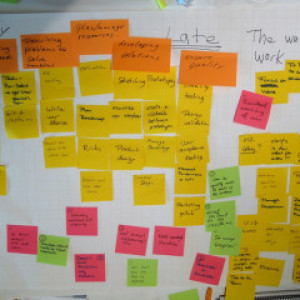Maximizing Productivity With Agile Sprints: Best Practices and Tips
Agile development practices have become increasingly popular in recent years, and one key component of agile development is the use of sprints. A sprint is a time-boxed iteration of work, typically lasting one to four weeks, in which a team works to complete a set of defined tasks. Sprints can help teams stay focused, improve their productivity, and deliver results more quickly.
So, how can you maximize the productivity of your agile sprints? Here are a few best practices and tips to consider:
-
Set clear goals and priorities: Before beginning a sprint, it's important to have a clear understanding of what you want to achieve. Set specific, measurable goals for the sprint and prioritize tasks based on their importance and impact. This will help ensure that the team stays focused and makes progress towards the most important objectives.
-
Define and refine your user stories: User stories are short descriptions of the features and functionality that your team will work on during the sprint. It's important to define these stories clearly and ensure that they are well-refined before the sprint begins. This will help the team understand the scope of the work and plan their efforts accordingly.
-
Estimate the size and complexity of each task: Estimating the size and complexity of each task can help the team understand how much work they can realistically take on during the sprint. This can help prevent scope creep and ensure that the team stays on track.
-
Track progress and adjust as needed: Regularly tracking progress during the sprint can help the team identify any issues or obstacles that may be hindering their progress. By making adjustments as needed, you can help ensure that the team stays on track and meets their goals for the sprint.
-
Collaborate and communicate effectively: Collaboration and effective communication are key to the success of any agile sprint. Encourage team members to work closely together, share ideas and progress updates, and seek help when needed. This can help ensure that the team stays aligned and on track.
-
Reflect and learn: After the sprint is complete, take time to reflect on what went well and what could have been done differently. Use this opportunity to identify any lessons learned and incorporate them into future sprints.
By following these best practices and tips, you can maximize the productivity of your agile sprints and deliver better results more quickly. By staying focused, defining clear goals and priorities, and collaborating and communicating effectively, you can help your team work more efficiently and effectively.




